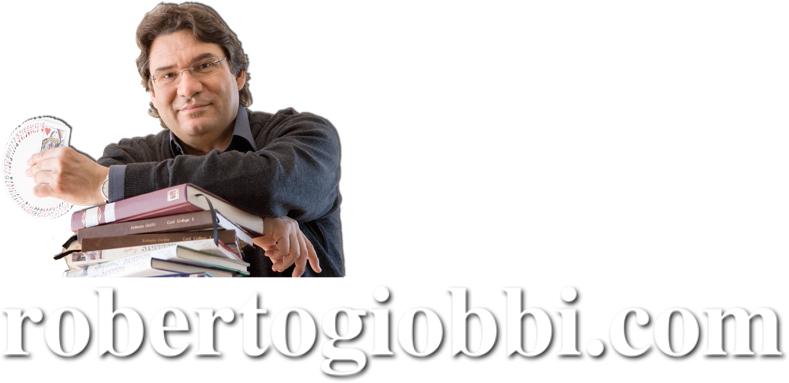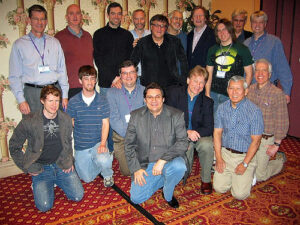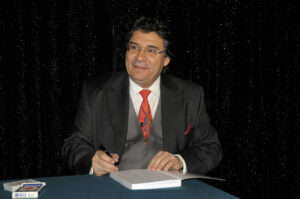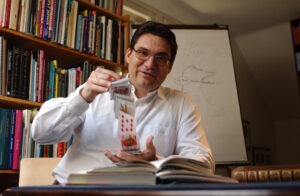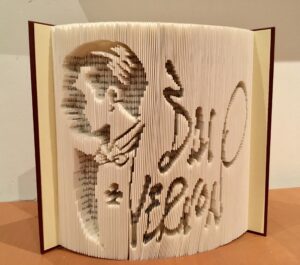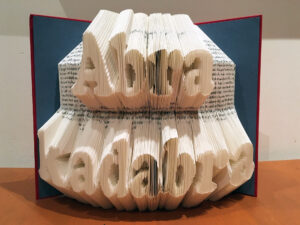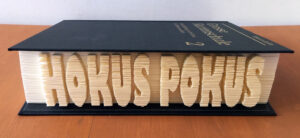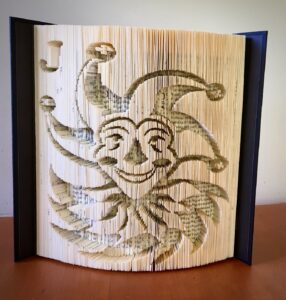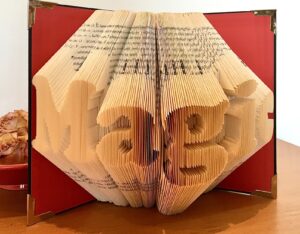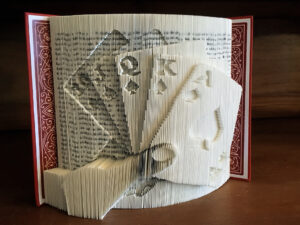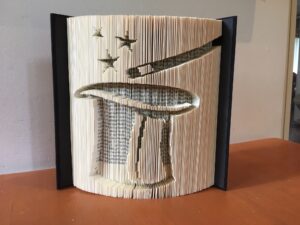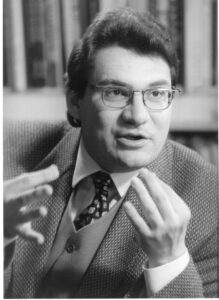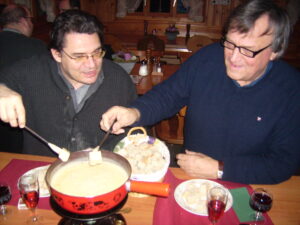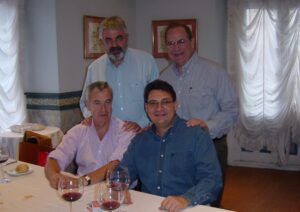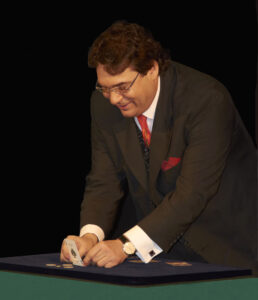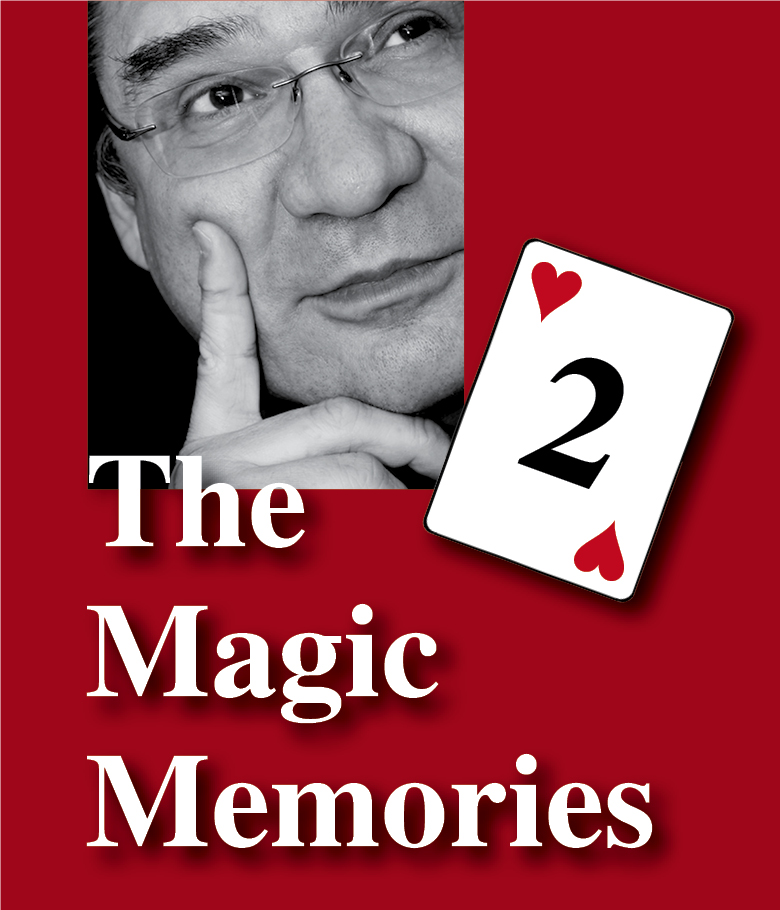
Hello everyone!
Here we are, on SUN 25th April, 0:07 o’clock, with The Magic Memories No. 17.
Today I’d like to say a few things about “How to Find a Presentation for a Trick”. As you can imagine I have a whole talk on the subject, actually it is a full-day Masterclass – what else did you expect 🙂 Don’t fear, I won’t deliver it here; I will just mention one presentational idea, explain how I got it, and then briefly discuss three examples of a trick to which the presentation could be applied.
Within the Masterclass I have a workshop where I make groups of three to four people each, and then give each group a newspaper or a magazine, whatever I find on site. The groups are given 15 minutes to go through the hand-out and are instructed to find three presentational ideas, of which they will present one by showing how it can be applied to a known trick, or one they can come up with on the spur of the moment. What at first sounds like a difficult task, turns out to be great fun, and I must say that each time I’m amazed at the excellent results presented.
I use the exercise above to demonstrate how presentational ideas are everywhere you look and listen, and will then discuss ten examples of mine. I’ve found presentational ideas in non-magic books, posters, advertisements of any type, on the labels of wine bottles, in train schedules, in interviews, in movies, by overhearing someone talk in an airplane, in essays and articles in various types of non-magic magazines, in instructions on how to sharpen a knife, on the back of tear-off calendars, etc.
For this chat we’ll keep it at one example: The other day I was watching an old episode of”Monk”, one of my favorite detective series starring Tony Shalhoub. I like it because the comedy doesn’t kill the mystery, no visible blood flows. and nobody is vomiting (it seems to me that almost all modern movies have at least one scene where someone is vomiting). In this episode Lt. Disher, the lovable-clumsy partner of Captain Stottlemeyer, utters one of his absurd-naiv ideas and says, “He might have a Doppelgänger. It is said that everyone has a Doppelgänger.” This last sentence immediately struck me as a captivating remark, ideal for a Prologue. So I immediately hit the pause key – the most important key on a remote control – made a note of the exact sentence, and then continued watching the delightful episode. Like in the Butterfly Effect from chaos theory this can be the beginning of a great piece of magic. The lesson here: always carry a small notebook or use your mobile phone’s recording function (I use an app called “4Memo”) to secure even the smallest idea.
Now, what do you do with that note? I tell you how I do it, and you do it likewise, or find a way that works for you. First, I go to my Evernote app, where I have a notebook called “magic” (really? :-), with a sub-notebook called “Presentations” that by now has hundreds of entries in almost as many notes. In this particular case I create a new note titled “Doppelgänger”. There I have made the following note:
-
-
-
“Hat Trick”, from Card College 1, p. 62
-
“A Real Prediction”, (Vernon), from: Steele, W. F. Rufus, The Last Word on Cards, USA 1952
-
“Cards of Coincidence”. This is a classic in Pat Page’s repertoire and an excellent impromptu card trick that can be performed stand-up before a larger group but is also very good for more intimate settings. Have several pairs of cards on top of deck, e.g., 7H/7D, QS/QC, etc. Hand a spectator the bottom half of the deck and you both shuffle your packets. You false shuffle your packet, retaining the top stock. Hand the spectator the top card of your packet and take the top card of his packet, placing each card on top of your respective packets. Then both turn the top card face up to reveal a matching pair (you Double Lift, of course). Place the cards on the bottom and repeat a few times. Page then palms a few cards from the top of his packet and offers to exchange packets. Repeat again once or twice.RG Comment:
-
Use only three pairs. Do the effect twice, then palm off the the third pair and repeat once.
-
As a right-handed person holding the cards in your left hand, turn your right side toward the audience asking your assisting spectator to stand on your left. In order to better protect the break you are holding under the top two cards, keep the packet slanted at about 45 degrees toward the floor. This will also better display the face of the card when you turn over the double card. Make sure everybody can see the cards, especially those sitting on the sides, by briefly bringing the cards, which are held in dealing position, into a vertical position and turning the body from left to right! Page sometimes neglected to do that and the break occasionally flashed. I thought this was an important lesson: regardless of how experienced we get, and how often we have done a trick, we should respect the trick as if it’s the first time we’re doing it. Try to never become negligent and always remain attentive. Nonchalance and self-confidence are important characteristics of a performer and only come after many years of intelligent practice and conscientious analysis, but this doesn’t relieve us from paying special attention to our technique at all times.
-
-
-
OK, that’s the full note… for now. As you can see, the simple sentence, “It is said that everyone has a Doppelgänger”, immediately got me to wonder what tricks could go with it. I quickly found three ideas, which are the ones I’m giving you here. As soon as I have a little free time I’ll go back to the note and find another ten tricks, that’s what I call “The Vernon Rule of Creativity” (because as a small boy he set out to find ten tricks with a string, but thought he’d never manage to do this, however, after he had started he found over one hundred… so he recounted himself).
Hope this triggers something in you.
Sharing Secrets – The 52 Most Important and Practical Strategies in Magic
How is the book doing? Thank you for asking! The book will go to the printer in Florence, Italy, on Monday, 26th April 2021, and it will then take about four weeks to complete, plus another week to get to me. If you’re not in the book business you’ll be surprised to hear that there are several companies involved in just making the physical book. This is of course only one of the reasons a book is so much more expensive than let’s say a DVD. And this doesn’t even take into account that it takes about a year to write and make a book, whereas you can tape the content of a DVD in one day plus a few days for editing and graphics.
Important: Make sure you have subscribed to the Secret Newsletter to get my pre-publication offer and more info. Here, as a first teaser, the first draft of the back and front cover:
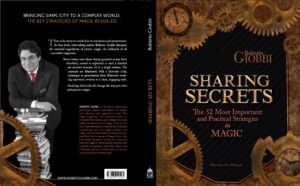
BTW: You might not be surprised to learn that I have a talk on the subject of how a book is created, from the initial idea in the author’s head until it hits the shops. I gave this talk only once, in 2005 in Paris, presenting Card College Volume 5, which had then just appeared in French. I speak about the many aspects of book-making and also perform and explain three tricks from the book. The talk has been filmed and is obviously in French, but if I get more than three solicitations I might upload it to YouTube, so those who are interested can watch it.
OK, my friends, that’s it for another week, which I hope will be most successful for you!
